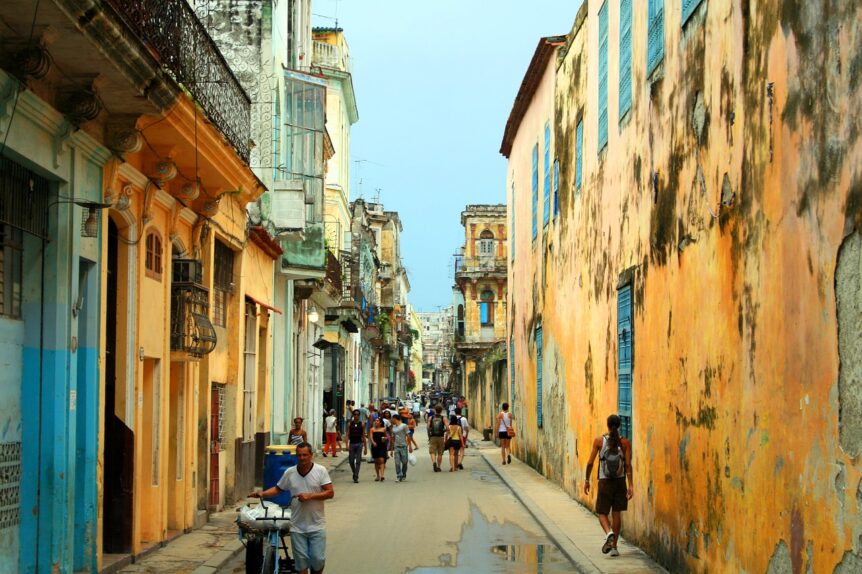If you’re eager to delve into the rich fabric of Cuban culture, this is the post for you. Explore essential Cuban expressions and forge genuine connections with the locals. From ‘Guagua’ to ‘Cafecito,’ get ready for an exciting adventure learning Cuban Spanish and unlocking the heart of this captivating nation!
“Guagua”
In Cuban Spanish, ‘Guagua’ refers to a bus or public transportation. This term is a vital part of everyday life in Cuba, as it signifies the reliance on communal transit for getting around the city. Understanding ‘Guagua’ provides a window into the transportation dynamics of the island and how locals go about their daily commutes.
“Cafecito”
Coffee, particularly the ritual of sharing a “cafecito,” is deeply ingrained in Cuban culture. By accepting an invitation for a ‘cafecito,’ you’re not only indulging in a beloved cultural tradition but also engaging in a social interaction. This often leads to meaningful conversations. It’s an opportunity to connect with the locals on a personal level. This helps you truly feel the warmth and hospitality of the Cuban people, enabling genuine connections and a deeper cultural understanding.
“Casa Particular”
A ‘Casa Particular’ is a unique lodging option in Cuba. Unlike traditional hotels or resorts, it involves staying in a private home, often with a Cuban family. This provides travelers with a genuine and immersive experience of daily life in Cuba. By choosing a ‘Casa Particular,’ visitors have the opportunity to witness and participate in the routines of local families. This fosters a deeper appreciation for the warmth and hospitality of the Cuban people, allowing for authentic connections and a richer understanding of the culture.
“A lo Cubano”
Doing things “a lo Cubano” encapsulates the essence of Cuban authenticity and passion. This phrase encourages visitors to embrace the local way of approaching various experiences. It’s an invitation to add that special touch of Cuban flair, demonstrating an openness to fully engaging with the culture and its vibrant way of life.
“¡Qué bola!”
The phrase “¡Qué bola!” serves as a distinctive Cuban greeting, providing an immediate introduction to the lively and friendly nature of the people. It’s akin to asking “How’s it going?” and sets the tone for interactions with locals. Being prepared to use this greeting demonstrates an eagerness to engage with Cubans on their own terms, fostering a sense of camaraderie and connection.
“Chancleta”
Referring to “chancletas” as more than just sandals emphasizes their cultural significance in Cuba. This is particularly evident in the context of warm beach days. It highlights the practicality and comfort of this footwear choice. This showcases how even the simplest items can play a role in everyday life and leisure activities.
“Malecón”
The Malecón in Havana is not just a promenade. It’s a cultural hub where locals come together to socialize, enjoy sweeping views, and feel the invigorating sea breeze. Understanding its importance offers a glimpse into this treasured communal space. It allows visitors to observe and engage in an authentic Cuban experience. The Malecón stretches along the coast, creating a scenic backdrop for Havana. It’s a vibrant meeting spot for both residents and tourists.
“Paladar”
The word ‘paladar’ in Cuban Spanish refers to a privately owned or family-run restaurant or eatery. These establishments can vary in size and are not limited exclusively to Cuban cuisine. Unlike state-owned restaurants, paladares offer a more personal and authentic dining experience.
“Artesanía”
“Artesanía” in Cuba refers to handmade objects created by skilled individuals known as artisans. These items are unique and special because they are not mass-produced in factories. Artisans use specific skills and techniques to craft things like ceramics, jewelry, clothing, and other beautiful items. Craftsmanship is important in Cuba as it showcases the country’s creativity and culture. Many people value crafts because they are authentic and have a personal touch.
“Almendron”
The term “almendrón” in Cuba refers to a type of taxi, and when you say “coger un almendrón,” you are expressing that you are going to take a taxi. These vehicles are usually vintage cars, old models that have been cared for and kept in operation over the years. The drivers of these taxis are known as “boteros.” When the Cubans are ready to go, they’ll say “Arranca chofe”. So don’t be alarmed, it’s time to hit the road!
And now, some local gems to make you feel at home while learning Cuban Spanish:
- If they talk about their “jeva(o)” or “jevito(a),” they’re referring to their boyfriend/girlfriend or someone special. Cuban love in action!
- Cubans are known for their creativity and sense of humor. So, are you ready to hear Cuban compliments like “Do you believe in love at first sight, or should I pass by again?”
- “If you receive an invitation to a party, brace yourself for a ‘pari,’ ‘fetecún,’ or ‘descarga.’ You’re in for a guaranteed good time!”
- Remember, Cubans are masters of irony and creativity, so don’t be surprised if they call you a “cotorra”! It means you talk a lot!
- If a Cuban tells you that you’re “en llama,” don’t be alarmed; instead, take it as an offense because he is calling you ugly.
By learning these Cuban expressions, you’ll be taking a significant step towards a more authentic experience in Cuba. It will not only help you communicate better but also enable you to connect more deeply with the people and culture of this incredible country. Enjoy your trip and keep learning Cuban Spanish!
For those intrigued by Cuba’s unique allure, we invite you to continue your exploration by clicking the links below:
Explore More Curious Articles About Cuba
Cuban Cigars: Discover Its Fascinating Facts
Top 5 authentic Cuban foods you must try on your tour of Havana
Hemingway in Cuba: 8 Facts About Hemingway’s Time in Cuba
Visiting Havana: 8 Compelling Reasons to Include it in Your Next Vacation
Our services: Book Us!

